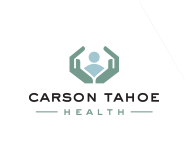
What is Coronary Artery Disease?
Coronary Artery Disease (CAD) is a condition in which deposits of cholesterol, calcium, and plaques build up on the walls of the coronary arteries – the vessels that supply blood to the heart muscle. These plaques can cause a gradual but progressive narrowing of the artery, or they can suddenly rupture, causing a more acute obstruction.
How is Coronary Artery Disease Treated?
There are three general categories of treatment:
- Medicines
- Percutaneous coronary interventions (PCI ) that include angioplasty and stents
- Surgical treatment (CABG – coronary artery bypass graft surgery)
What is a stent?
Treatment for CAD often times requires the placement of a stent to open the artery. A coronary stent is a flexible, expandable balloon wire mesh strut that is inserted and expanded across a blockage in an artery to open the blockage. Most stents in this day and age are coated with medicine to keep the blockade and/or scar tissue from returning.
How is a stent placed?
Typically, the femoral artery, near the groin, is the standard access site for stent placement, but exclusive at Carson Tahoe, specially trained interventional cardiologists access the radial artery. Using the radial artery in the wrist has shown less bleeding complications and better patient comfort. Stents are placed using a non-surgical technique called PCI. The stent is delivered over a guidewire in collapsed fashion across a coronary blockage. It is expanded with a balloon, which is then deflated and removed, leaving the stent in place.
What are the risks and benefits of stenting for treatment or CAD?
Risks are of the stent placement procedure, not the stent itself and are very low. Risks include bleeding, heart attack, stroke, kidney dysfunction/failure (from the contrast dye used), heart rhythm disturbances, vascular damage, and death. Combined, the risk of any of these complications in this day and age is 1-2%.
Benefits of stent will depend on the situation in which they are used. For example, in the setting of an active heart attack, PCI can be life saving or prevent serious damage to the heart by stopping the heart attack. Conversely, in patients with stable coronary disease, stents can be useful, in addition to medication, for improving symptoms of angina (chest pain). Either way, they provide significant benefit to cardiac patients.
Are stents safe?
Stents are very safe, but not indestructible. If they are not properly cared for (i.e. diligent compliance with medications, smoking cessation, cholesterol control, blood pressure control, good diet/exercise, etc), they can have problems such as clogging up with scar tissue or forming a blood clot – both of which can cause serious complications such as heart attack or stroke. Complication or failure rates with currently used drug-coated stents are very low (less than 5%), but are not zero. Stents must be cared for diligently, by the doctor and the patient.
How is it determined if stent placement for treating CAD is necessary or appropriate?
Identification of the presence of coronary heart disease (CHD) and determination of its risk is the job of the patient’s doctor(s) (primary care and cardiologist). Once the patient is found to be at high risk for CHD by identification of signs and symptoms and possibly non-invasive stress testing, generally coronary angiography will be done. This will define the patient’s coronary anatomy, and such will determine which therapy is most appropriate (i.e. medical vs PCI vs surgery).
Dr. Stephen Tann is an Interventional Cardiologist at Carson Tahoe Cardiology. Dr. Tann performs his procedures in one of the three state-of-the-art catheterization labs located inside the Carson Tahoe Regional Medical Center. For more information about the Radial Technique, the catheterization lab or Coronary Artery Disease, call Carson Tahoe Cardiology at (775) 445-7650.







